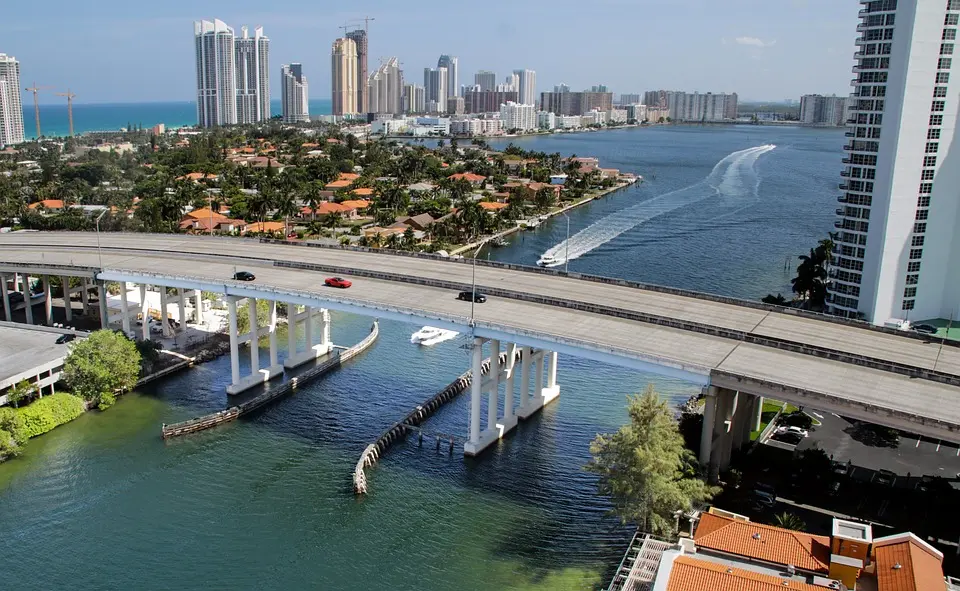Flounder: Habitats - Bridges
Table of Contents
Fishing Bridges for Flounder

Image Credit: yanivmatza on Pixabay
Overview of Fishing Bridges for Flounder
Bridges create a distinctive fishing environment where natural and man-made structures form complex habitats ideal for flounder. The areas surrounding bridges, such as channels and sheltered pockets, are influenced by tidal currents and water depth changes, which concentrate baitfish and offer prime ambush points for flounder.
Features Found Around and Under Bridges
-
Under-Bridge Channels:
Bridges often span narrow channels where tidal currents concentrate baitfish. Flounder can be found lying in wait along these channels, taking advantage of water movement to bring prey close. -
Pillars and Supports:
The vertical structures of bridges provide natural cover and create areas of reduced light. These features serve as effective ambush spots where flounder hide on the bottom. -
Tidal and Current Effects:
Variations in tide and current near bridges lead to fluctuations in water depth and prey concentration. Inlets, channels, and areas adjacent to the bridge often experience these dynamic conditions. -
Bridges on Jetties or Inlets:
When a bridge is positioned on the jetty of an inlet, it can form a natural breakwater. The resulting calm water adjacent to the structure can be especially attractive to flounder.
Flounder Behavior Around Bridges
-
Habitat Use:
Flounder typically reside along the bottom under and around bridges, particularly in channels where currents concentrate food. They use the natural cover provided by bridge structures to remain concealed. -
Feeding Behavior:
In these environments, flounder exhibit sudden, aggressive strikes when prey drifts within reach. Their behavior can vary with tidal changes, with increased activity during periods of higher water movement.
Targeting Flounder Near Bridges
-
Bait and Rigging:
Live baits such as pilchards, finger mullet, or shrimp are effective for mimicking natural forage in bridge areas. Use a sliding sinker or fish finder rig to keep the bait close to the bottom and allow it to move naturally. -
Lure Options:
Soft plastic lures that imitate injured baitfish are recommended. Choose natural colors (sandy, brown, or muted greens) that blend with the substrate. -
Retrieve Techniques (Excluding Steady Retrieve):
- Stop-and-Go Retrieve:
Alternate between a smooth motion and deliberate pauses to simulate injured or drifting prey, encouraging a flounder strike. - Erratic Twitching:
Add sudden, sharp twitches to your retrieve to mimic the unpredictable movements of wounded baitfish, provoking an explosive response. - Variable Speed Retrieval:
Changing the speed of your retrieve intermittently can mimic natural prey behavior and may unsettle flounder into striking.
- Stop-and-Go Retrieve:
Community and Expert Angler Tips
- Learning Through Video:
Watching detailed video tutorials can help refine your approach. Look for experts who specialize in fishing bridges for Flounder to learn advanced techniques.
Click the thumbnail above to watch a detailed guide on fishing bridges for Flounder.
For more tips, check out "fishing Bridges for Flounder tips" on YouTube
Popular Search Terms Related to Bridges for Flounder
| Search Term | Thumbnail | Link |
|---|---|---|
| Bridge Flounder Techniques | Watch Video | |
| Best Live Baits for Flounder Near Bridges | Watch Video | |
| Bridge Retrieve Strategies for Flounder | Watch Video | |
| Where to Find Flounder Around Bridges | Watch Video | |
| Flounder Fishing Tips Near Bridges | Watch Video |
Ask AI for More Info
Try our AI assistant for free—sign up to access this powerful feature.
👉 Sign Up to Ask AI